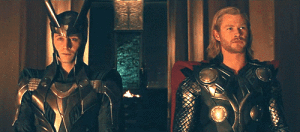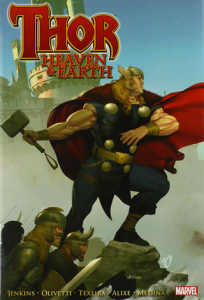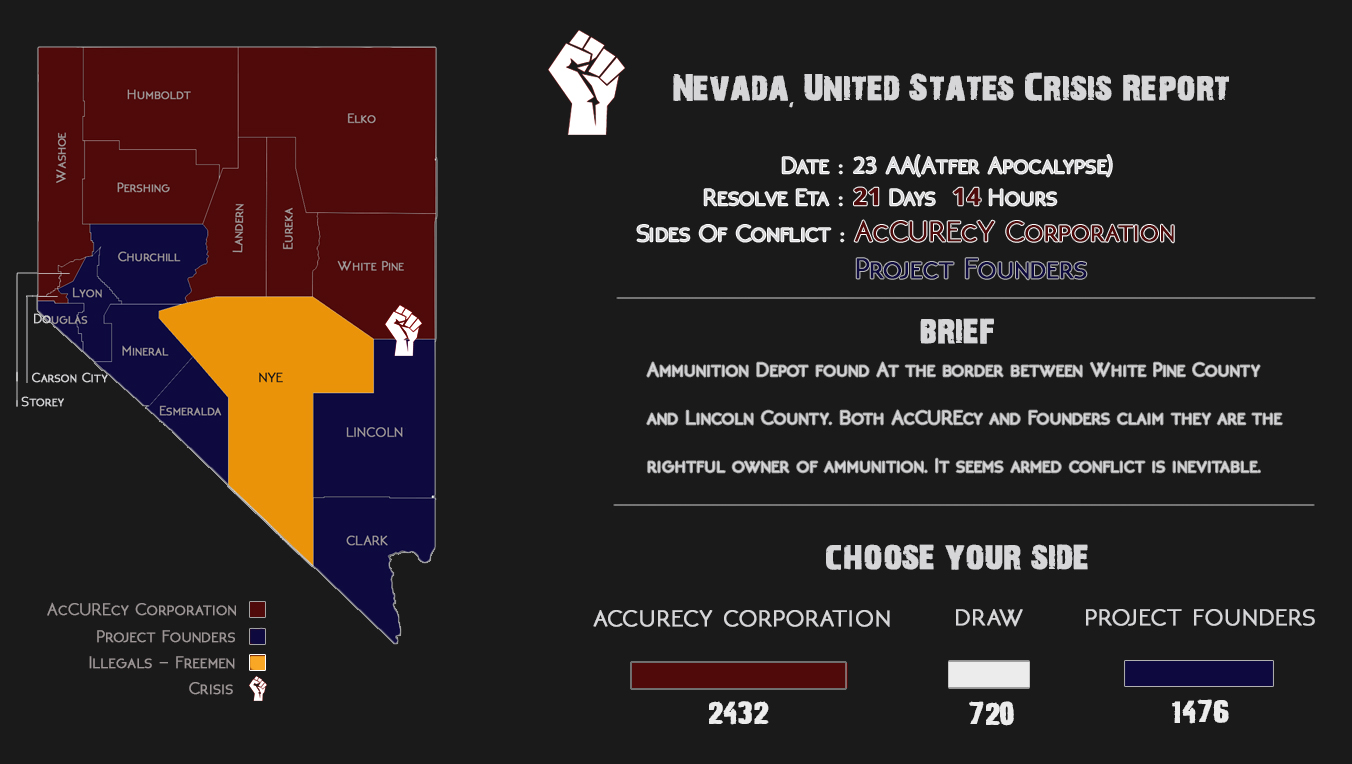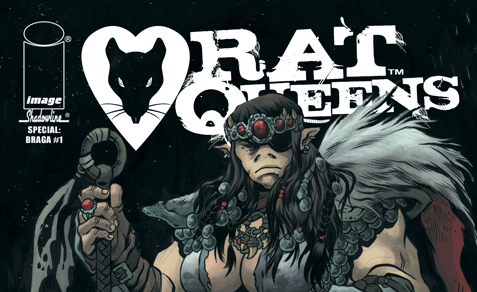I’m a huge fan of Thor, and my love of Thor comics stemmed from the fantastic Thor movies in the Marvel Cinematic Universe (MCU). When I first saw “Thor,” I was overwhelmed by the visually spectacular Asgard – and that’s saying a lot, considering I’m constantly reading about and watching myth and fantasy-based content. Once I really got into the franchise, Thor’s home, culture, and personal views continued to interest me.
Enter Marvel’s “Thor: Heaven & Earth,” an essential part of my journey as a Thor fan. This 2011 collection, written by Paul Jenkins, explores the adventures of Thor (and yes, Loki) on Midgard with a focus on the relationships between gods and mortals. The series explores how organized religion handles the appearance of Norse gods, the motivations of Asgard’s champions and tricksters, and the intersection of Norse mythology with other European tales.
Each of these four stories unlocks character depth matching the epic nature of Asgard itself.
I: “The Day Before Winter”
In this tale, Tyr and Valkyrie defend Asgard as Ragnarok approaches. Meanwhile, Thor sorts out his feelings about his impending doom with Loki.
Sympathy for the Trickster
As a fan of Thor, I readily view everything Loki says with skepticism. I know he basically has an army of fans (aided by Tom Hiddleston’s genuine kindness IRL), but I’ve always had trouble really sympathizing with the character, MCU or otherwise. I understand his complexities, motivation, and his nature, but I don’t feel it.
That changed for me with “The Day Before Winter,” illustrated by Ariel Olivetti, when Loki proves (with very feelsy examples) that “some good can come of lies.”
The most moving example shows a girl lying to her father about who broke a lamp – it was her brother, but she takes the blame so the boy won’t have to feel the sting of the abusive father’s belt.
Another poignant example involves a politician lying about funds. The funds are really going to support a hospital in need.
While the gender roles in the examples are rather typical (sacrificer, victim, caregiver), they do prominently feature women. The female politician in particular speaks from a place of power and compassion.
Each of these examples are depicted with Loki’s iconic helmet silhouette, signifying the presence of the lie. This connection likely reflects the way the Norse felt about the presence of the gods in the past; it is not at all dissimilar to how modern day Christians may see the devil as both an ever-present force and a persona. This detail pulls away the foreign, overwhelming feeling I experienced the first time I saw “Thor.”
Loki concludes with what he feels is a very personal lie. Thor’s words: “I love you as my brother.” As they continue to discuss Ragnarok, Thor is clearly distraught because he does not wish to accept it and sees no way to fix it. This only enhances my admiration for the character.
The Faces
Olivetti conveys unmistakable emotions on the characters’ faces, swaying my emotions panel by panel. Loki exudes confidence, dismay, helplessness, and acceptance, while Thor presents anger, defiance, pride, and the obstinate countenance remincent of his father.
II: “Blowing in the Wind”
In this piece (illusrated by Mark “Tex” Texeira), Thor aids some police officers when a hostage-taker demands his presence. Turns out the hostage taker, Wayne Markley, a.k.a. Fusion, has issues about superheroes and mortality because his son fell to his death after trying to emulate Spider-Man. Markley wants Thor to bring his son back and Thor needs to explain why he, regarded as a god, cannot do this.
The Contemplative God
We see Thor in action often, but in this story, we see him reason with an unreasonable man who is clearly in a great deal of pain. (Maybe Thor’s effective here since he’s used to dealing with Loki!) Thor discusses choice versus fate with Markley, also revealing some insight about why he values and worries for humanity. Ultimately, Thor provides us with a godly perspective: humans often blame others than ourselves when we are in pain or make foolish choices.
Since Thor’s usually made fun of for being brutish and impulsive, I’m glad to see this side of him. Any being who has lived for thousands of years would likely understand such complexities, or at least make an attempt to find the theme in centuries of chaos. Do we need saviors to help us, or do we want them to blame?
Thor destroys stuff and he fixes stuff, much like Mjolnir. Often, Marvel’s stories about Thor deal with him coming to know himself in this way. Here, we see the wisdom of his years even though he is not drawn as ‘old Thor.’
Though dealing with a conversation, Jenkins and Texeira frame it as an internal battle, resulting in many of the same emotions and grand scale. It would have been easy to inject too much dialogue, but they enable Thor to ‘show, not tell’ himself whenever possible.
III: “Ask Me Tomorrow”
As a Thor fan, I hear others criticize this character in particular when it comes to their suspension of disbelief. Much like Captain America in “The Avengers,” fans can’t always immediately accept the reality of a Norse god walking around New York (even if it’s just pretend). Illustrated by Pascal Alixe, “Ask Me Tomorrow” addresses the social and religious questions you might assume a major publisher would not tackle.
Again, this story looks at a different aspect of Thor. Written off as simply inhabiting the domain of bold warfare (with a side of occasional sentiment), we don’t get to really experience Thor’s own feelings about what it’s like to be regarded as a god. He values mortals, but what about how they see them? “Ask Me Tomorrow” examines this view as Thor comes to the bedside of a dying priest.
When First They Met: Are You A God?
The story rewinds to four years previous, when Thor meets the priest during a battle. Thor’s teaming up with the rest of The Avengers (including Spider-Man) and the Fantastic Four. After saving the day by disposing of the otherworldly threats, Thor declines commentary and encounters the priest and they discuss Thor’s very nature. The priest asks Thor to reconcile his very existence with Christian beliefs.
When Thor returns, they discuss it further and the priest is forthright about his own doubts once more.
The Nature of Christianity
I like what this story says in particular about the nature of Christianity. Thor sits in a church speaking to a Catholic priest and he is not condemned. He doesn’t burst into flames. He’s there to keep a promise and help even though he is not the god of that particular religion. This not only speaks miles about Thor, but about a gentler interpretation of Christian teachings and Jesus himself.
If only people of all faiths took the time to think about things this way and examine their own beliefs to make them stronger, perhaps the would find more answers.
Comparative Imagery
The imagery in this story is bold. I’m sure it’s hardly coincidental that Thor discusses this issue with Sif, himself unarmored in the orchard of Idunn, for example. Similarly, the priest’s own crisis of faith is reflective of many instances in the Bible.
Again, we also see Thor in internal conflict, but at peace in his contemplation. While he and the dying priest unravel and recognize mysteries, they both openly learn because of (and not in spite of) their differences.
If only more stories had that kind of lesson, accepted as a story rather than a didactic lecture.
IV: “The Dragon of Dolgellau”
Illustrated by Lan Medina, “The Dragon of Dolgellau” follows an American travel guide writer in Wales. On a train, the writer encounters a mysterious man knowledgeable about local folklore, including ‘The Red Dragon,’ connected to a nearby snowy mountain.
The tale he tells is not romanticized and does not paint the Norse gods or people in a compassionate light, false or otherwise. The native Dolgellau men seek help against the Northmen. They strike a deal with the Red Dragon who devours the Norse men – but the Norse pray to the Aesir and many of their gods show up, including Thor.
Brutal Fight
Yeah, I like a bloody “300”-style battle sometimes, and “The Dragon of Dolgellau” delivers. Every participant in battle is depicted as fierce and battleworthy. Medina’s depiction is visceral without detracting from action or story.
Women in ‘The Dragon of Dolgellau’
We know of the following women in this story:
- The wife of a Norse man, who is referred to as property and stolen by Dolgellau Prince Rhodri, beginning the war
- Four sacrifices to the Red Dragon in exchange for his help
- Though not a woman, Thor is insulted as ‘princess’ much like in his first film
The four stories are pretty standard for comics of days past: they’re all about white guys. Marvel has obviously diversified since then, but reading the four issues back to back in a volume does underscore the lack of diversity. Valkyrie does confront Ragnarok with greater zest than Thor, but even Sif is a sultry confidante at most, present to evoke the image of Eve in the third story.
Additional Credits
- “Blowing in the Wind” is colored by Sotocolor.
- “Ask Me Tomorrow” is colored by Sotocolor. Cover art: Agustin Padilla and Chris Sotomayor.
- “The Dragon of Dolgellau” is colored by Chris Sotomayor. Cover art: Stephane Perger.
- The volume is lettered by Dave Sharpe.
As a Volume
Since we got into Thor’s mind and emotions deeply throughout these stories, it would have been nice if at least one of them had referenced his relationship to a woman in any way. After all, his relationship with Jane Foster often reflects his feelings for Midgard: protective, genuine, and often in awe of the other’s self-reliance.
For a work printed in 2011, though, it’s pretty solid. Additionally, I’m willing to be especially forgiving due to Jenkins’ honest and multi-facted look at my favorite superhero. Thor is hardly as simple as some people would like to think. It’s also nice to get a look at situations and dilemmas he faces without using or needing the excuse of a romantic relationship.
While MCU Loki might be quick to note it’s “that woman” who can be credited (or blamed) for Thor’s affection for Earth, this volume lets us see that his capacity for helping humans is founded on more than one relationship or connection.
While Jenkins stopped working with Marvel in 2013 due to difficulties in their business partnership, his work remains my favorite example of the cultural struggles and differences in understanding encountered between worlds. (He stopped working with DC around the same time.)
Jenkins remains conscientious of the status of the comic book industry, Tweeting about its state in early August, 2015:
So here's the question: are comics in 2015 in a better state, creatively, than in 2000? I wonder how people feel about that…
— Paul Jenkins (@mypauljenkins) August 8, 2015
All of this makes me very curious about what Jenkins might have had Thor say, think, or do were he given no limits at all.
What do you think? Please chime in using the comments section.
Disclosure: I have no material connection to this material, however the post does contain links to an affiliate page for purchase.







